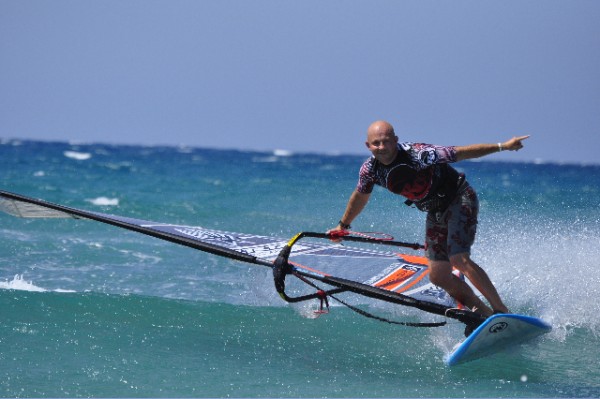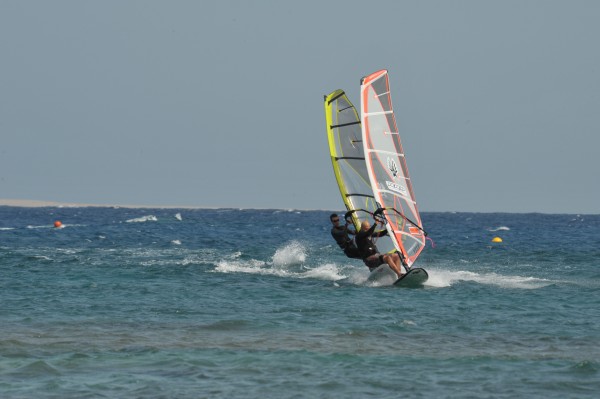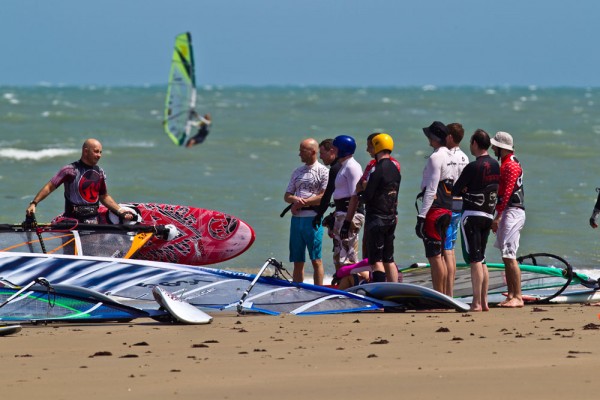Over to our technique guru Jem Hall to see what he has to say in his aptly named new series examining a multitude of windsurfing skills and techniques. This time round Jem introduces you to what he has to offer to educate, enthuse, entertain and inspire you to take your sailing up a level.

- Welcome to Moves That Matter – Photo, Sue Winston
THE MOVES THAT MATTER
A very happy and somewhat belated New Year to you all, and welcome to my new technique series, the Moves That Matter (MTM). I’ll be covering many of the moves that are on a lot of people’s wish lists, from essential fundamentals through to some very feasible freestyle. The tips and insights I’ll be highlighting come from near on 20 years of teaching, 15 years of coaching and lots of valuable feedback from my top crew of past and present customers. It is, after all, these people who tell me what they want, and it’s only by working together that we can identify and set targets and break them down into achievable chunks.
Now, without wanting to coin an already well-known phrase, there are many skills that transfer through our great sport all the way from ‘Beginner to Winner.’ When I coach somebody specific techniques I know that they’ll be utilising these for many years to come, as I believe that the only limits placed on what you can attain are the limits you place on yourself.
Let’s look at one example of this.
When I coach beginners to get comfortable in their stance (position on the board in relation to the rig) I always look to get their front hand back to a place I call the ‘Power Zone’. This is where the most power in the rig comes from, and is about 30% of the way back from the mast (4 – 6 hand widths or so). Positioning the front hand in the Power Zone gets them moving faster, better able to commit and lean back to the power coming from the sail, and will more often than not get them hooked to our sport quicker as they’ll glide faster across the water and get ‘that’ feeling which only we know about. Why is this crucial? Well, later on in the sport they’ll fare so much better in high speed blasting, gybing, waveriding and looping. Moreover, if this crucial skill is not downloaded, employed and enjoyed in the early stages, then it will inevitably have to be revisited at some point – especially if we’re going to move forward in many of the fun moves we’re looking to acquire. So, if you’re a beginner, or somebody coaching your mate, child, relation or partner (inadvisable!) then please ensure those front hands are back on the boom as, yes, this really does matter a huge amount.
SO WHAT ARE THE MOVES THAT MATTER?
I’ll look to define these now and fully reserve the right to add more – and with your help and input too. To this end I’ll be starting a thread on this fine website’s forum called, surprisingly, the Moves That Matter. Here you can ask me questions on what I present in this series and also post pics and / or videos so that I can offer you some coaching tips on how to progress. Of course, you’ll learn so much more on one of my fine coaching clinics as you can get all this live, instant and direct with the conditions to put it in place. Okay, pimping done now. Here we go…

- Go fast and enjoy all the winds – Photo, Sophie Hall
Stance – many people enquire about clinics, and those from one particular nationality (which will remain nameless) often say: “I’d like to learn to carve gybe, vulcan and possibly forward loop too. And yes – in one week”. Truth of the matter is that this might not be totally realistic, and what actually happens is that they improve mostly their stance. They have more fun and go faster in both gusts and lulls as they observe and adapt to the ever-changing power of the wind. Speed does matter. We all love it and it makes a lot of our moves much easier.
Start – efficient beachstarts lead to quicker waterstart competency and being able to do the latter in all sorts of ways and both under and overpowered. This is highly important in order to get home in time for tea, or actually make it out of the surf break.
Holy Trinity – bibles and rosary beads out please. As the title suggests, this breaks down into three areas: getting upwind (faster and / or more efficiently), planing early (in a variety of wind strengths), and sailing fast. These three actually relate strongly to each other. For example, if you plane early you get more fin lift earlier in your run out so you can go faster sooner and then get upwind even higher than you were before. Or, if you can point upwind quite high, then you can bear away and go very fast. (Hand dragging and stroking your moustache is optional at this point.)


